The real estate industry is one of the most high-competitive business sectors around. To survive in this environment of an increased competition a real estate company needs to have effective tools at its disposal. One of the must-have tools is a website. Statistics say that about 90% of real estate companies in the US have websites, so to stand out from the crowd one needs to have a very good site. In our guide, we’ll try to figure out what real estate site is good, why you need it, and what pitfalls you can come against.
The Main Reasons to Make a Real Estate Website
Having a modern real estate website has a number of benefits. If you still hesitate about the need for developing a site, here are, at least, three convincing arguments for doing so.
- It saves time for both you and your potential customers. Suppose, someone is ready to use your services and knows what he/she needs. With a good informative website, this client doesn’t need to contact you by phone, ask dozens of questions, and encroach your time. Instead, he can find the needed information online by himself and, if necessary, contact you via an online chat for detail. You, in turn, will have more time for working with “cold” clients. Moreover, statistic says that over 60% of millennials, when they have to choose between a phone talk and a live chat, opt for the latter.
- It meets today’s requirements. We live in the digital era where the Internet is the main source of information. For many people, it has become the only source of information. The chart below shows where people of various age groups find real estate. These are only real cases, which ended in purchasing. As you can see, the share of the Internet is too large to be ignored.
- A lot of opportunities for advertising. Internet marketing is known for its flexibility and affordability. Depending on your financial capabilities and readiness to invest, you can opt for any number of marketing channels and get more leads. The popular online marketing channels include e-mail marketing, content marketing, pay-per-click marketing, SEO, and others.
Basic Features of a Real Estate Website
Of course, you may create a website with a bare minimum of features, which will help your potential customers contact you, no more. However, if we are speaking of a really good, competitive website, then we should consider some top-notch features. Let’s review each of them in closer detail.
Listings and Mapping
An essential component of any real estate website is a list of homes for sale or for rent. Depending on your company’s specifics, you may either have your own listing database or use MLS, which stands for the Multiple Listing Service. Listings traditionally contain all the basic characteristics of the property: its location, area, cost, facilities, and, of course, several high-quality photos. You may choose one or several MLSs to work with. Once you get access to their database, you can integrate it into your website with the help of the Internet Data Exchange tool.
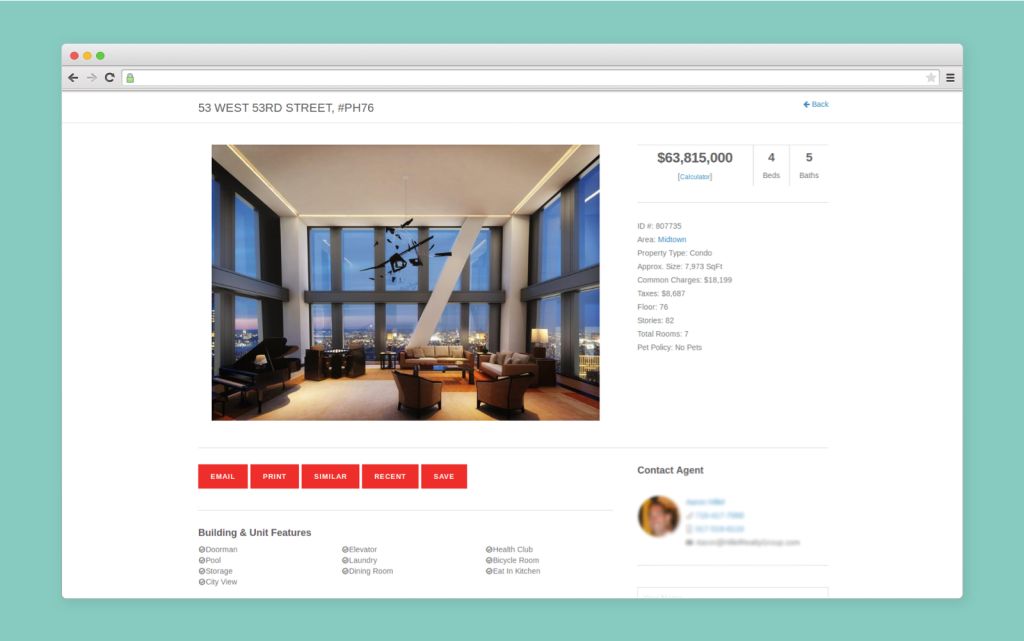
Mapping is also important, as it enhances visualization. The best way to show where a real estate object is located is to show it on the map.
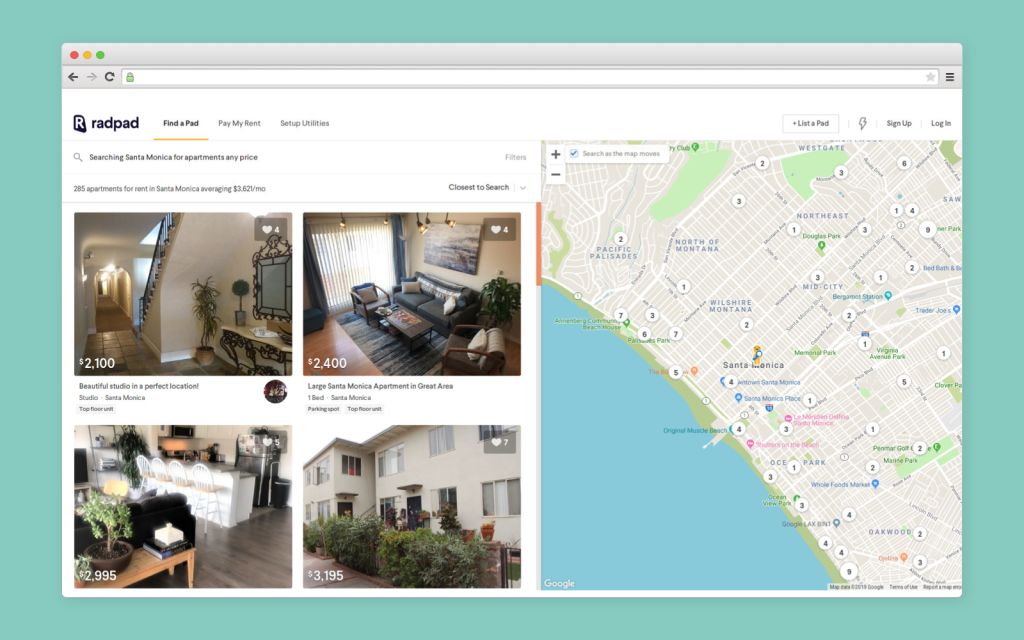
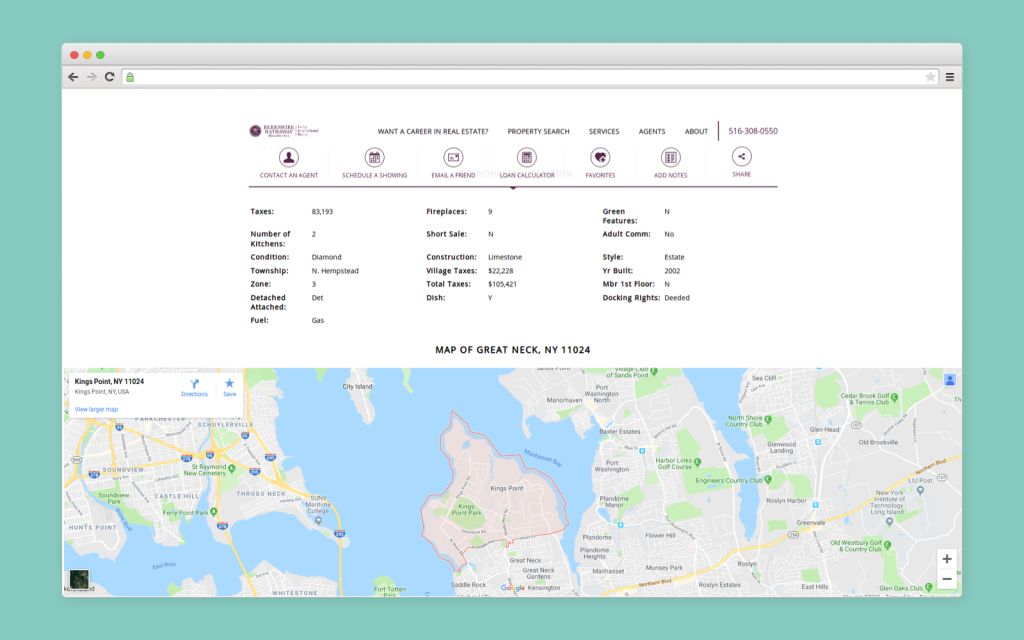
Responsive Design
While content is always the primary thing to consider, design matters much as well. One of the latest trends in web development is responsive design. A responsive website or web app is automatically adjusted to any screen size and shape. Apart from its convenience, it has at least two major benefits.
- Mobile-friendliness. You don’t want to lose a good share of customers by ignoring mobile Internet users, do you? Responsive design boosts user experience and attracts users of different devices and platforms.
- Better SEO. Responsive websites are optimized for search engines better. They are ranked by Google higher than a similar website with a non-responsive design.
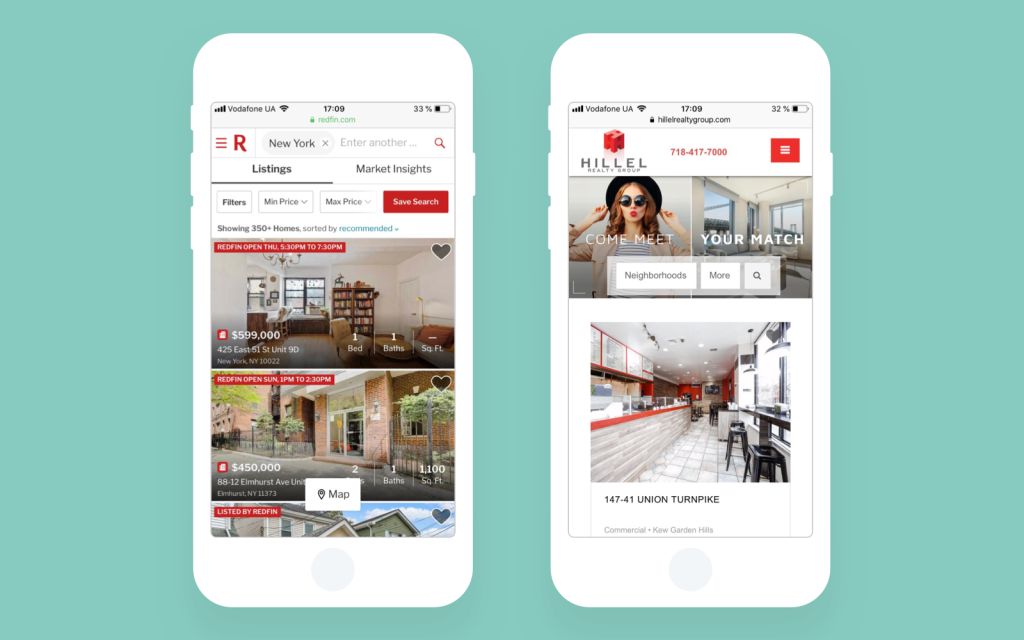
The Search Feature
Customers need convenient search filters not to get lost in a huge listing database. The realization of this feature affects the conversion rate greatly. Well-known real estate sites, such as Zillow or Trulia use the following frequently used filters:
- type of listing;
- address;
- number of bedrooms (bathrooms);
- price;
- type of home;
- square feet;
- year built.
At the same time, it makes no sense to include amenities in the search filters. Customers can find information about the nearest malls, retail stores, schools, etc. right on the map if they need it.
On some real estate websites, registered users get additional possibilities, such as saving the searches. It adds convenience to customers and helps the site owners collect data for future targeted marketing campaigns.
High-Quality Photos
Before your clients see an apartment offered, they see its photo and decide whether they like it or not. A good photo along can make a prospective customer contact the company for details. That is why the importance of images can’t be overestimated. Professional-grade pictures are an absolute must on such websites.
That being said, one needs to keep in mind that high-rec photos are heavy. The web developers’ task, therefore, is finding a perfect balance between the quality and size of pictures. For example, one of the possible solutions is converting the images to JPEG or PNG formats.
Calculators
Calculators are important tools that help customers quickly estimate their financial capabilities and make a weighted decision about buying a property. The availability of various calculators is one more reason why clients can stay on your website a bit longer, thus, increasing the conversion rate. Examples of popular calculators are the following:
- debt-to-income;
- mortgage;
- affordability;
- rent vs buy;
- refinance
Some companies, such as Zillow, use top-notch solutions, for example, Artificial Intelligence and Machine Learning to make their calculators generate the most accurate and precise results.
A CRM System
A customer relationship management system s a must-have for any serious business. It allows you to resolve multiple tasks: collect data about your customers, make reports, check statistics, develop targeted marketing campaigns, and manage the customer database. You can use one of the ready-made CRM solutions available in the market or develop a unique CRM system, which will fully meet your needs and expectations.
Blog
A properly made blog will help you increase the conversion rate, improve the ranking in search engine systems, and attract new customers. Using a blog, you can share useful information with your clients and gain more traffic by posting SEO-optimized texts. Some examples of what you can write in your blog:
- tips on buying/renting a property;
- hot news of the industry;
- guides and reviews;
- legal aspects of real estate companies working.
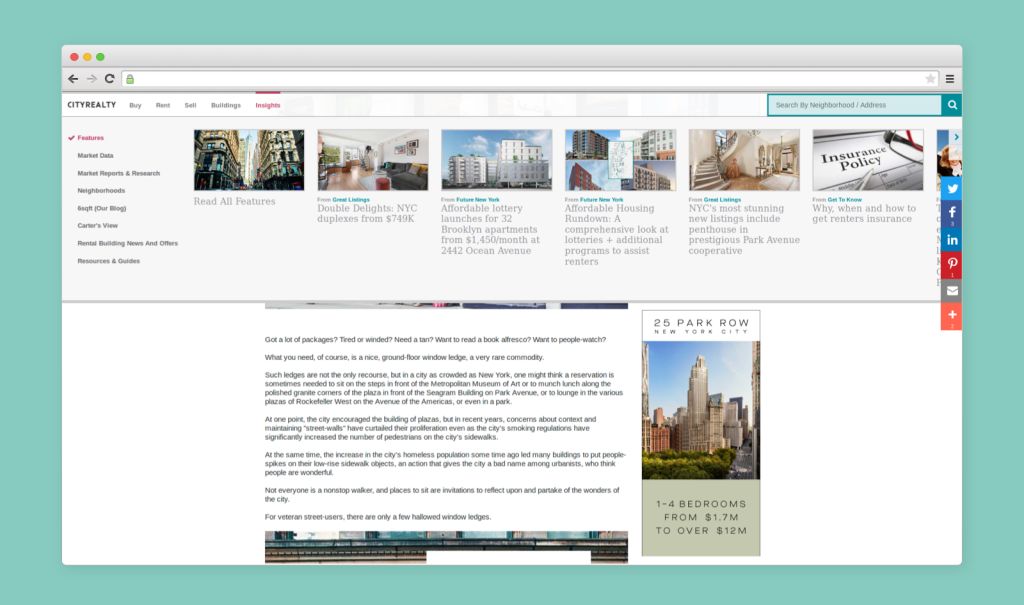
Additional Features
To provide better user experience you may consider adding some extra features. Though they are not mandatory, they can add convenience and make your site more user-friendly.
- a live chat;
- calendars;
- online market analytic;
- favorites
How to Create a Real Estate Site: a Step-by-Step Guide
The development of a real estate website must be fulfilled by a team of professionals. Alternatively, you can use one of the ready-made templates and adapt it to the needs of your company. However, these typical platforms lack flexibility and possibilities of customization. That is why if you want your future website to be unique and fully customizable, hiring professionals is the right choice. There are three possible options:
- Finding a local developer company. It is convenient, as you can control every stage of the development process and meet the developers as often as you need. However, local services are usually quite expensive.
- Looking for a foreign software development partner that offers its services remotely. This type of cooperation lacks the convenience of the previous method, but depending on the country, the development costs can be much more affordable.
- In-house development. It makes sense if you are going to create a website, which requires regular monitoring and maintenance.
As soon as you’ve decided on the type of cooperation with developers, you need to go through the main stages.
Choosing a Dev Company
Selecting a vendor company is crucial, as it’s the developer who is responsible for the end result. Make sure the employees have the needed skills and experience in the sphere of real estate website development. If you don’t know what to begin with, check information on some major platforms, such as Clutch, GoodFirms, or IT Firms to find a reliable and reputable team.
Cooperation
The process of cooperation is multi-staged. Once you’ve chosen a vendor, you need to resolve the following core tasks.
- At this stage, you should set your goals, clarify the requirements to the product, define the timeframes, and the costs.
- Now, developers start working at making the website prototype. At first, they draw it by hand, and after the approval, they proceed to the prototype development.
- This is the final stage of creating a working website.
In fact, the development process can include a lot of intermediate steps. Its duration depends on the project complexity and the set of required features.
How Much Does It Cost to Develop a Real Estate Website?
The total cost of developing a full-featured real estate website varies significantly. It is made up of two main variables – the number of hours required and the rate per hour. Thus, depending on the required functionality, the development process can take from 1500 to 2100 hours. With an hourly rate of $50 (an average rate for Eastern Europe), the total price can vary from $75 000 to $105 000.
That said, one needs to keep in mind that rates in other regions can be much higher. Thus, in Western Europe and Australia, an average hourly rate is $100, while in the USA it can reach $150.
The Bottom Line
The real estate industry is among the most competitive industries around, so you need to stand out if you want to be noticed by customers. One of the powerful tools for gaining customers is a professional website. Its development requires time and effort, but the result is worthy of it.
Vitaly Kuprenko is a technical writer at Cleveroad. It’s a custom web development company in Ukraine. He enjoys telling about tech innovations and digital ways to boost businesses.